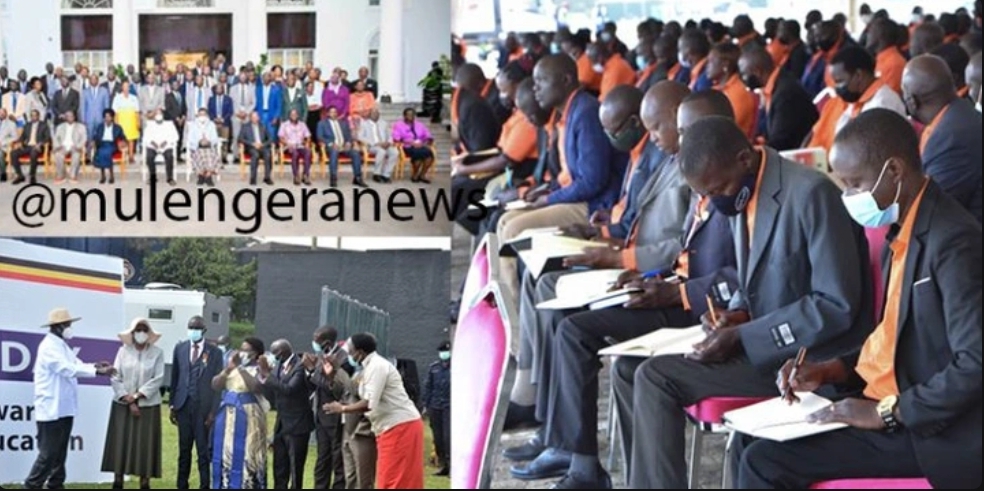Inside Government’s New Pay Deal for Arts Teachers

Following weeks of a sit-down strike that left arts lessons suspended across many government secondary schools, Government has come out with a new plan aimed at addressing the concerns raised by arts teachers.
The strike, led by the Uganda Arts Teachers Association (UATA), had disrupted learning nationwide, forcing top officials into a crisis meeting with President Yoweri Museveni at State House.
The meeting, also attended by Minister of Education Janet Museveni, Public Service Minister Wilson Muruli Mukasa, Finance Minister Matia Kasaija, and others, resulted in a new pay and welfare package for the humanity teachers.
Government will start by releasing over 25% of the UGX 500 billion annual salary enhancement package for teachers during the 2024/2025 financial year, while the rest of the money will be paid in phases over the next few years, with full implementation expected by July 2026.
This means that although teachers will not get the full pay rise immediately, the process has officially started. At the moment, a graduate arts teacher earns about UGX 1.07 million per month, while a science teacher earns up to UGX 4 million, a big difference which has been a source of anger among arts teachers.
To help close the gap, Government has promised to review Pay-As-You-Earn (PAYE) taxes for arts teachers, with the aim of increasing their take-home pay, though some teachers have expressed concern that changing the tax structure could affect their pensions in future, since pensions are based on gross pay.
On top of the salary changes, Museveni also pledged to put UGX 20 billion into teachers’ SACCOs, meant to help teachers access low-interest loans and reduce dependence on banks and moneylenders, as government wants teachers to get soft loans through their cooperatives while they wait for the full salary increment.
However, some education experts have warned that SACCO funds must be well managed if teachers are to benefit because in the past, Government funds sent to different SACCOs have been mismanaged, and similar risks still remain. Experts have called for strong monitoring systems to ensure transparency and accountability.
Government has also promised to build houses for teachers, starting with schools in rural and hard-to-reach areas. According to Finance State Minister Amos Lugolobi, construction will begin once funds are available.
The plan is to allow teachers to stay near their schools instead of renting or walking long distances. Poor housing has been a common complaint, especially in upcountry schools where some teachers sleep in staffrooms or nearby trading centres.
Following the State House meeting, UATA leaders announced that the strike had been suspended, which has allowed schools to return to normal, and coursework and exams that had stalled can now continue.
The Uganda National Examinations Board (UNEB) had earlier warned that the teachers’ strike was delaying assessment and could affect the academic calendar if it dragged on.
Uganda has about 17,000 arts teachers on the Government payroll, and meeting all their salary demands would require about UGX 500 billion each year, which is not fully available in the current budget.
Still, Government has promised to reduce the pressure by starting with what is available. With pledges of salary improvements, SACCO support, better housing, and further engagement, officials say they are serious this time.
Education Minister Janet Museveni said Government is committed to working with all stakeholders to improve the teaching profession and promised regular dialogue to solve challenges as they arise.
Teaching has resumed for now, but many teachers say they will be keeping an eye on how far Government goes with its promises









0 Comments